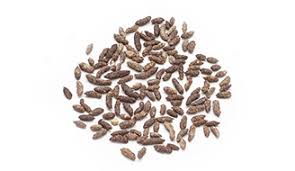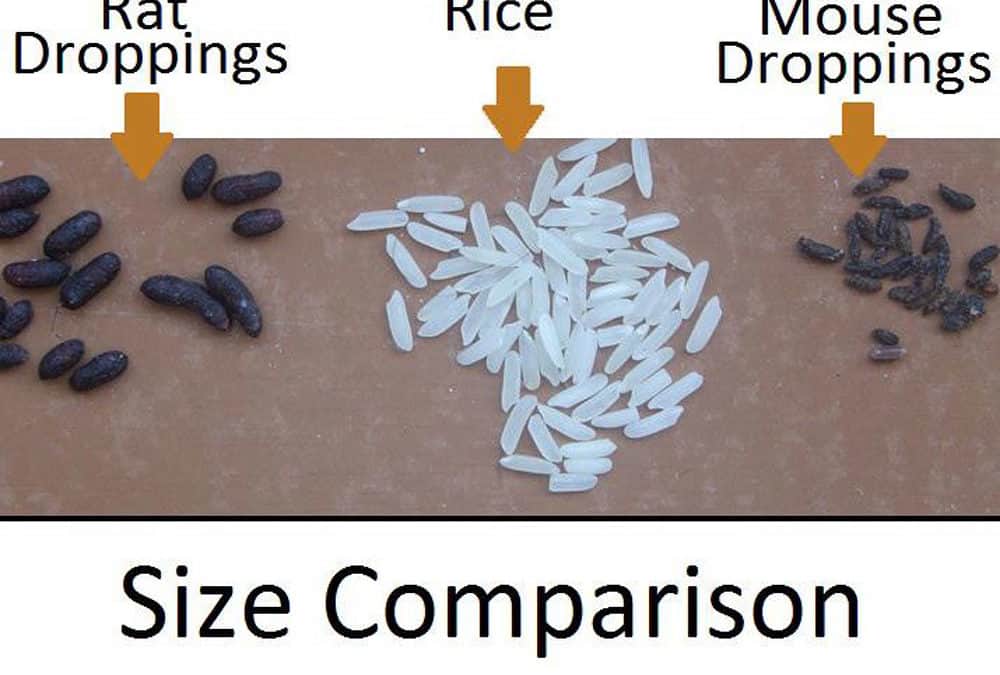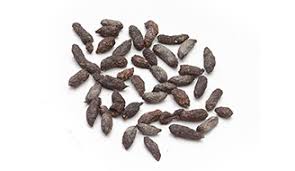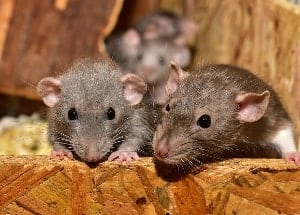Discovering animal feces without being able to identify the source of it can be distressing. However, rat droppings can be particularly problematic because these small rodents tend to defecate in the same location. As a result, once you become aware that you have a rodent infestation, you may also find a sizable accumulation of feces. This can require a significant amount of effort to clean up and repair the affected areas, even after you have addressed the underlying rodent problem.
It is very critical to take a couple of measures to handle the poop effectively. Besides, you also need to be cautious to prevent getting any diseases from dealing with the droppings. Still, do you know what rat poop looks like? How can you get rid of it completely? I have created this article to help you with this unpleasant issue.
What Do Rat Feces Look Like?

So, you’re wondering, “what does rat poop look like?” It’s quite easy to identify rat feces, especially if they have infested your property. You will see dark poop pellets scattered all over the place. They tend to appear in big groupings, are about an olive’s shape and size, and can mostly be found close to insulations. Still, you can always look up pictures of rat poop to see what they look like.
Color
They are normally black; so, the blacker they are, the fresher they are. This should help to tell whether the infestation is old or new. Old poop tends to dry out, turning gray.
Size
You might be curious about the size of rat feces. This can depend on the species of rat, as well as the age of the individual rodent. If you discover multiple droppings in a single location, which is probable, you should be able to distinguish between those left by younger and older rats. This will allow you to determine whether there are any rats present in your home or not. If the feces are smaller than a grain of rice, they were most likely left by a smaller creature such as a cockroach or a mouse.

Quantity
If you look at pictures of rat feces, you’ll see that they tend to come in large quantities. In one day, a single rat can produce between 30 to 55 droppings. Even a large number of droppings can indicate the presence of rodents in your home. The quantity of droppings is particularly relevant because it allows experts to estimate how many rats are present on the property.
Shape
Most rat turds are sausage-shaped. Others tend to look like pills. You might notice a pinch at either end, with the turd looking somehow pointed.

Moisture
New feces are usually moist and have a shiny appearance. You can check the freshness of feces by using a pen to press it. If the feces crumbles, it’s a sign that it’s old.
Location
Rats are bigger in comparison to mice. So, rat poop is normally found in places that are large enough for them to fit. They include the attic spaces, below kitchen equipment, behind stored containers or storage shelves, or along a shed or garage’s wall.
Related Post: Most Effective Rodenticides Reviewed.
Difference Between Rat Poop and Other Pests

Rat droppings size is different as compared to that of other animals. On the picture you can see rat droppings. For instance, the droppings of squirrels are normally smaller in comparison to those of rats. They are approximately ⅜ of an inch, while the poop size of an average rat is ¾ of an inch. Besides, squirrels have highly cylindrical-shaped turds, which are browner as well.
Bats, on the other hand, have slightly tinier droppings in comparison to rats, resembling a long black pellet of rice. Mice also have smaller turds in comparison to rats. Finally, roach droppings are also smaller being roughly ¼ of an inch, and black, which is why they are often mistaken for mice poop. However, cockroaches will get into spaces that even mice can’t access, so their poop will be found in several locations.

Is Rat Poop Dangerous? What Diseases May It Cause?
In the colder months, rats tend to look for a warm and safe place with food, often entering our homes through small openings. However, the problem with having rats inside our homes is that they can spread diseases and cause significant property damage. Rat droppings, for instance, can spread bacteria, trigger allergies, and contaminate food sources. When rat poop dries out, it can also be hazardous to inhale. Moreover, rat droppings can also carry viruses and diseases, such as:
Hantavirus
This is a potentially lethal disease spread by rodents to human beings. You get it if you become exposed to or inhale infected rat dropping, saliva, or urine. Besides, the chances heighten when you are near a space where rats are actively residing. Early signs and symptoms of hantavirus include feeling dizzy or tired, headaches, a fever, abdominal pains, chills, as well as muscle aches.
Bubonic Plague
This plague is also referred to as the “Black Death.” It is significantly contagious, and popular for killing roughly 34% of the population in Europe during the Middle Ages. It is normally spread through being bitten by an infected rat and can lead to headaches, fever, or lymph nodes that are swollen and painful.
Salmonellosis
This is a kind of food poisoning. It is spread by rat poop through consuming contaminated food. Symptoms of this disease include abdominal pain, fever, and diarrhea.
Rat-Bite Fever (RBF)
This is another potentially serious infectious disease caused by rats. It is spread by an infected rat or consuming food that has been contaminated by rats. Symptoms include pain in the muscles, a rash, headaches, puking, and fever.
How to Clean It Safely
Naturally, you may be seeking advice on how to clean up rat droppings. This can be a complicated process that requires great care. However, this passage will provide you with detailed instructions for cleaning up rat poop.
Start by opening your windows and doors. It’s crucial to ventilate the room you’ll be cleaning for at least half an hour before you begin.
- Put on protective gear, such as rubber gloves to prevent direct contact with the feces. A face mask will prevent inhalation of dust, and protective goggles can keep contaminated dust out of your eyes.
- Spray the droppings with a 10% chlorine bleach solution (720 ml of chlorine bleach in 10 liters of hot water). Do not use a vacuum or broom, as this could release pathogens into the air or trap them in your cleaning tools.
- Use a paper towel to pick up the droppings, and dispose of them in a plastic bag that can be sealed. Dispose of the waste outside of your property.
- Wipe all surfaces and floors with disinfectant, such as the previously mentioned solution. Once finished, dry the surfaces with a paper towel.
- Finally, thoroughly clean your hands and scrub them with disinfectant and hot water.
Frequently Asked Questions on Rat Feces
Now you have an idea of what rat poop looks like. Besides, you know that it causes diseases. Still, I’d like to address some of the commonly asked questions.
Related Post: Best No-Kill Mouse and Rat Traps Reviewed.
What Does Rat Poop Smell Like?
You will notice an odor that is musky and pungent in your property. The urine, however, tends to have a more noticeable odor. If there’s rat poop, there is rat urine as well.
How Long Is Rat Poop Toxic?
There isn’t a particular time frame within which rat poop remains toxic. This is because, whether moist or dry, it can cause diseases. It can trigger allergies, contaminate sources of food, and spread bacteria, whether it is fresh or old.
What Disease Is Caused by Rat Poop?
Though I have already mentioned this aspect, I would like to collect all the negative impacts of rat feces that may cause harm to a human’s health in one list. So, these diseases are:
- Hantavirus;
- Bubonic plague;
- Rat-bite fever;
- Salmonellosis.
[wpsm_titlebox title=”Read more:” style=”main”]
[su_posts template=”templates/teaser-loop.php” id=”6081, 5863, 2886″ posts_per_page=”3″ order=”desc”]
[/wpsm_titlebox]
Getting Rid of Rat Poop in Your Property
Rat poop can be quite stressful to clean out. It may leave your home with a pungent odor or looking unpleasant. Besides, you’ve seen that rat turds can also cause several diseases. Of course, you don’t want to take chances, that is why you need to clean it out as soon as you can.
With the details given above, it becomes easier not only to identify what rat poop looks like but also to clean it out. How do you deal with these rodents, and clean out their poop? I am looking forward to your questions and comments, which can be left in the comment section below.
References:
- Cleaning Up After Rodents (Centers for Disease Control and Prevention):
https://www.cdc.gov/rodents/cleaning/index.html


Comments are closed.